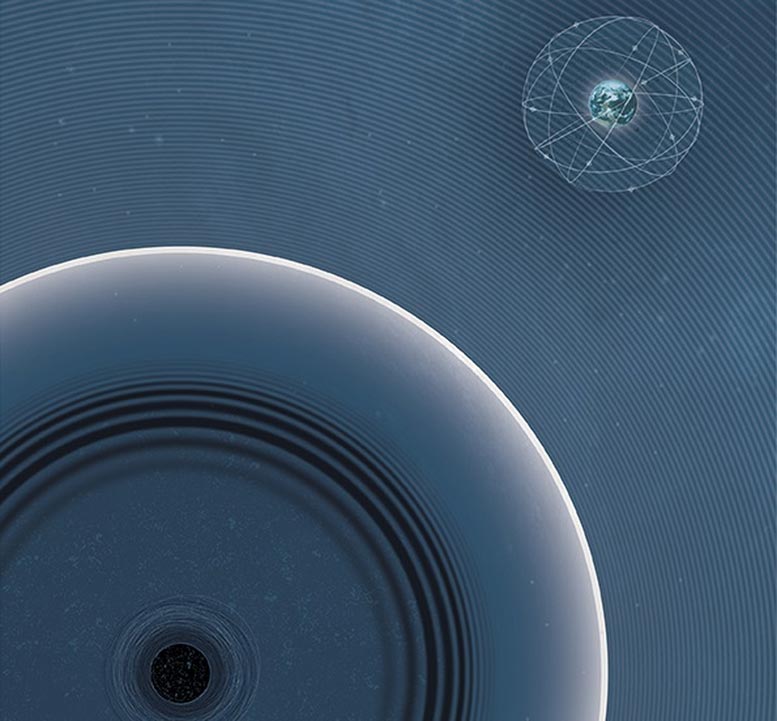
The merger of black holes could release energy in the form of ELFs (bottom left of the image). It might be possible to detect their weak signals with quantum sensor networks such as the GPS network (top right in the image). Credit: Ill./©: Sarah and Hannah Lilienthal
PRISMA+ scientists propose exotic low-mass fields as new messengers of astrophysical events.
Cataclysmic astrophysical events such as black hole mergers could release energy in unexpected forms. Exotic low-mass fields (ELFs), for example, could propagate through space and cause feeble signals detectable with quantum sensor networks such as the atomic clocks of the GPS network or the magnetometers of the GNOME network. These are the results of theoretical calculations undertaken by a research group including Dr. Arne Wickenbrock of the PRISMA+ Cluster of Excellence at Johannes Gutenberg University Mainz (JGU) and the Helmholtz Institute Mainz (HIM). They are particularly interesting in the context of the search for dark matter as low-mass fields are regarded as promising candidates for this exotic form of matter.
From multi-messenger astronomy to the search for dark matter
Multi-messenger astronomy involves the coordinated observation of disparate signals that stem from the same astrophysical event. Since the first detection of gravitational waves with the LIGO interferometer several years ago, the interest in this field has expanded enormously and it has yielded a tremendous amount of new information originating from the depths of the universe. “When gravitational waves are generated somewhere in space and detected on Earth, numerous telescopes now focus on the event to record various signals, such as those in the form of electromagnetic radiation, for instance,” explained Dr. Arne Wickenbrock. “We asked ourselves what would happen if part of the observed energy released by such events was also radiated in the form of exotic low-mass fields or ELFs. Would we be able to detect them with our existing networks of quantum sensors?”
The scientists’ calculations have confirmed that this could be the case for certain parameters. “We also reasoned that such fields, when radiated, would cause a characteristic frequency signature in the networks,” Wickenbrock added. “The signal would be similar to the sound of a passing siren, sweeping from high to low frequencies.” The researchers have two particular networks in mind: the worldwide GPS network of atomic clocks and the GNOME network, which is comprised of a multitude of magnetometers distributed around the globe. On the basis of the expected strength of the signal, the GPS system should currently be sensitive enough to detect ELFs. The workgroup of JGU Professor Dmitry Budker at HIM, together with other teams, is currently upgrading the GNOME network, and on completion this should also be sensitive enough to observe such events.
Potential ELFs are of particular significance in the search for dark matter. Although we know this strange form of matter must exist, nobody yet knows what it is made of. Specialists are considering and researching a whole range of possible particles that might theoretically qualify as candidates. Among the most promising current candidates are extremely light bosonic particles, which can also be seen in terms of a classic field oscillating at a particular frequency. “Thus, in the depths of the universe, dark matter in the form of ELFs may be created during the merger of two black holes,” concluded Dr. Arne Wickenbrock. “Precision quantum sensor networks, in turn, could function as ELF telescopes, adding another important element to the toolbox of multi-messenger astronomy.”
Reference: “Quantum sensor networks as exotic field telescopes for multi-messenger astronomy” by Conner Dailey, Colin Bradley, Derek F. Jackson Kimball, Ibrahim A. Sulai, Szymon Pustelny, Arne Wickenbrock and Andrei Derevianko, 2 November 2020, Nature Astronomy.
DOI: 10.1038/s41550-020-01242-7


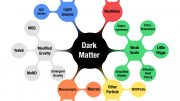
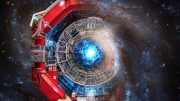
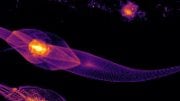
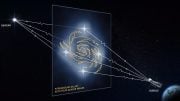
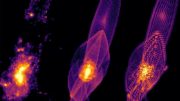


Was watching a program on T.V and the were using a device that would send some kind of signal into the ground. And when they were done they could bring up a picture of what was lying in the ground some 10 metres below. Has anybody ever tried to use that tech in space I believe it uses sound. Why would that not work to see what’s lying under the visible universe or space that we can see?
We see all of the universe, except possibly for what physicists calls “hidden sectors”, since we now know space is cosmologically flat background, i.e. 3 dimensions of space.
Physicists tries all sorts of detectors, such as the one described in the article. For ground surveys, besides the metal detectors that many use for fun, people tend to use ground radar – radar can penetrate some distance – or lidar – laser detection travel time reveal obscure topography even under vegetation if you do it right. Maybe it was one of the two latter you saw?
ELFs:
Photons, it will be discovered, are ELFs and that explains EVERYTHING about dark matter, dark energy, expansion and more.
Photons are non-exotic massless bosons, not exotic low mass bosons.
Lee berry –
No sound in space.
“Among the most promising current candidates are extremely light bosonic particles”.
Only if you hope such spin 0 particles will be axions and also solve matter-antimatter asymmetry for you [“Axion” @ Wikipedia]. The problem with that is obvious:
“As we shall see below, it is useful to differentiate dark matter into “hot” (HDM) and “cold” (CDM) types–some even suggesting a middle-ground of “warm” dark matter (WDM). The terminology refers to the mass of the dark matter particles (which dictates the speed at which they travel): HDM travels faster than CDM because the HDM particles are theorized to be of lower mass.[3]”
“Because cold dark matter possesses a lower velocity, it could be the source of “smaller, galaxy-sized lumps,” as shown in the image.[4] Hot dark matter, then, should correspond to the formation of larger mass aggregates that surround whole galaxy clusters. However, data from the cosmic microwave background radiation, as measured by the COBE satellite, is highly uniform, and such high-velocity hot dark matter particles cannot form clumps as small as galaxies beginning from such a smooth initial state, highlighting a discrepancy in what dark matter theory and the actual data are saying. Theoretically, in order to explain relatively small-scale structures in the observable Universe, it is necessary to invoke cold dark matter or WDM. In other words, Hot dark matter being the sole substance in explaining cosmic galaxy formation is no longer viable, placing hot dark matter under the larger umbrella of mixed dark matter (MDM) theory.”
[“Hot dark matter” @ Wikipedia]
But of course they should look – maybe they find something new.
Mr. Larrson, you are correct quoting current theory on photons.
That theroy, like many other carved in stone, will change.
Actually, it can’t change fundamentally by now, since LHC found and characterized the Higgs particle and its field 2012. That completes the standard model of particles sufficiently so that by 2017 particle physicists concluded the model is correct – and it is self consistent in that they can predict parameters which they couldn’t if particles were missing, different or exotic interactions were important.
The standard model can be extended – it doesn’t currently predict neutrino masses say – but photons et cetera are robust and will keep their properties. (Or our entire physics science will be replaced, which is unlikely indeed.)
HUMANS ARE NOT ABLE TO UNDERSTAND THE EXISTENCE OF ALL THINGS,WHICH ARE CONNECTED OUTSIDE THE EMS IN PARADOXES WHICH CONFUSES HUMAN THOUGHT IN THE EMS.IF DARK ENERGY AND MATTER IS THE BINDING OF MATTER AND DARK MATTER AND THE UNIVERSE CANNOT EXIST WITHOUT IT THEN IT IS CONNECTED TO THE PARADOX OF THE EXISTENCE OF ALL THINGS WHICH DEFIES HUMAN THOUGHT ABILITY WHICH ONLY A CREATOR OF ALL THINGS AND THE PARADOX CAN UNDERSTAND.IT IS NOT POSSIBLE FOR THE HUMAN BRAIN TO UNDERSTAND THESE THINGS UNLESS THE WEAKNESS OF HUMAN THOUGHT IS COMPENSATED FOR.
That is a claim in need of references, and partly containing superstition.
But for what it is worth, we understand the current LCDM cosmology which describes “the existence of all things”. And, incidentally, has found that space is flat over sufficiently large volumes. That means, under LCDM general relativity, that total energy and total work must sum to zero over such volumes, which is a constraint to observe what is natural and what is extraneous magic of your superstition ideas. And we can now see – since 2018 – that there is no ‘creator gods’. The universe is the result of a spontaneous onset adiabatic free expansion that it undergoes.